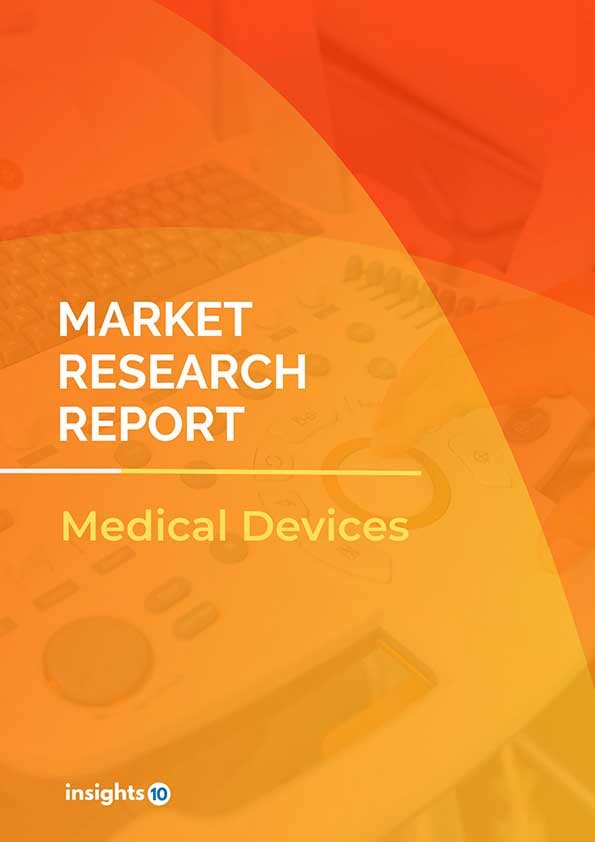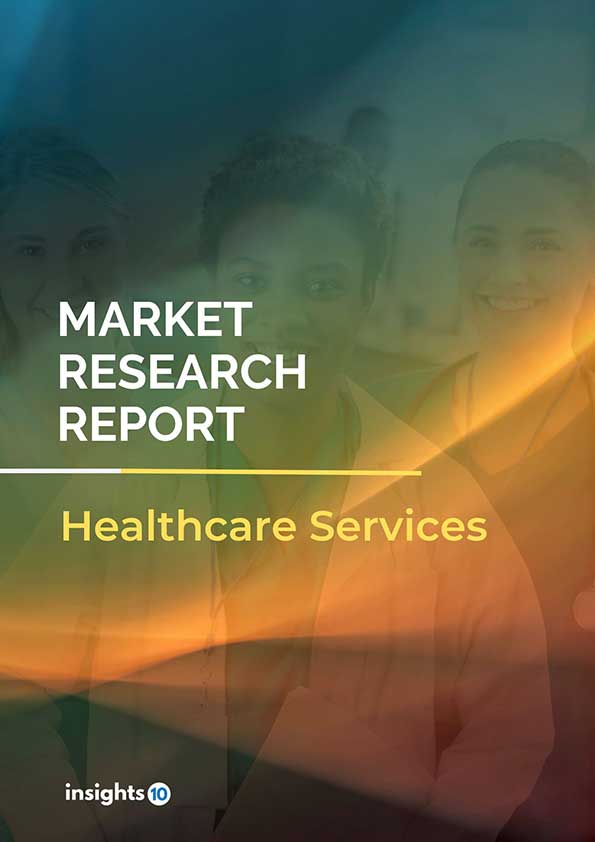Mexico Bio-implant Market Analysis
The Mexico Bio-implant Market was valued at $975 Mn in 2023 and is predicted to grow at a CAGR of 6.15% from 2023 to 2030, to $1480.6 Mn by 2030. The Mexico Bio-implant Market is growing due to Demographic Trends, Healthcare Expenditure, and Medical Tourism. The market is primarily dominated by players such as Medtronic Mexico, Zimmer Biomet Mexico, Stryker Mexico, DePuy Synthes Mexico, Boston Scientific Corporation, and Johnson & Johnson Services.
Buy Now

Mexico Bio-implant Market Executive Summary
Mexico Bio-implant Market is at around $975 Mn in 2023 and is projected to reach $1480.6 Mn in 2030, exhibiting a CAGR of 6.15% during the forecast period.
Bioimplants are novel medical devices that are designed to replace or support a biological structure or function within the body. These instruments range widely in complexity and purpose from simple dental implants to intricate devices like pacemakers, prosthetic joints, and neurological implants. One of the primary objectives of bioimplants is to improve the quality of life for people who are afflicted with different diseases or accidents by using implanted devices to replace lost or damaged functions. Bio-implants, which are often composed of biocompatible materials, reduce the likelihood of rejection. Innovations like wireless connectivity and sensors added to bioimplants, which enable remote modifications and real-time physiological data monitoring, are driving the market's expansion.
Mexico faces significant challenges in its bioimplant market due to a high prevalence of chronic diseases like diabetes and cardiovascular conditions, affecting a large segment of the aging population. As of 2022, over 10 Mn Mexicans aged 65 and older contribute to the demand for bioimplants, driven by osteoarthritis and other age-related conditions. Demographically, urbanization and increasing healthcare access influence market growth, with an expanding middle class seeking advanced medical solutions. These factors underscore a dynamic market poised for growth but challenged by healthcare infrastructure disparities and economic inequalities across regions. Therefore, the market is driven by significant factors like Demographic Trends, Healthcare Expenditure, and Medical Tourism. However, High Costs of treatment, Regulatory Challenges, and Adverse Effects from Bio-implants restrict the growth and potential of the market.
Straumann has collaborated with local dental clinics and institutions to enhance distribution channels and improve access to their implant products across different regions in Mexico.

Market Dynamics
Market Growth Drivers
Demographic Trends: Mexico's aging population is a significant driver for the bioimplant market. As the population ages, there is a higher incidence of age-related conditions such as osteoarthritis and cardiovascular diseases, which often require bioimplant solutions like joint replacements and cardiovascular stents. According to the National Institute of Statistics and Geography (INEGI), Mexico's population aged 60 and over is expected to grow substantially, reaching 20% of the total population by 2050.
Healthcare Expenditures: Increased government and private sector investments in healthcare infrastructure and services drive demand for bioimplants. The Mexican government has been expanding healthcare coverage, leading to higher accessibility to advanced medical treatments, including bioimplant surgeries. According to the World Bank, healthcare expenditure in Mexico has been increasing steadily, demonstrating a commitment to improving healthcare services.
Medical Tourism: Mexico's attractiveness as a medical tourism destination is also driving the bioimplant market. The country offers competitive pricing for medical procedures and implants compared to developed nations, attracting international patients seeking quality healthcare at lower costs. Data indicates a 15% annual increase in medical tourists seeking implant-related procedures in Mexico.
Market Restraints
High Cost of Treatment: The expense associated with bioimplant procedures acts as a major deterrent for patients. In Mexico, where healthcare costs can be prohibitive for many, this barrier significantly limits access to bioimplant therapies. For instance, the average cost of dental implants in Mexico ranges from $1,000 to $3,000 per implant, making it unaffordable for a large segment of the population.
Regulatory Challenges: Regulatory hurdles, including lengthy approval processes and stringent requirements for bioimplant products, can delay market entry and increase costs for manufacturers. These challenges also affect the availability and variety of bioimplant options in the Mexican market.
Adverse Effects from Bio-implants: The most prevalent type of immunological reaction to implants is metal sensitivity. The most often utilized metals in orthopedic and dental implants are titanium, cobalt, chromium, and stainless steel (with nickel). Cardiac stents and patches (an alloy of titanium and nickel) are made with nitinol. Metal alloys like titanium, nickel, cobalt, chromium, molybdenum, and zirconium are commonly used in medical implants.
Regulatory Landscape and Reimbursement scenario
The regulatory landscape for the bioimplant market in Mexico is governed by the Federal Commission for Protection against Sanitary Risk (COFEPRIS). COFEPRIS oversees the approval and regulation of medical devices, including bioimplants, ensuring they meet safety, efficacy, and quality standards before entering the market. Manufacturers must comply with Mexican Official Standards (NOMs) that define requirements for registration, labeling, and post-market surveillance. The regulatory framework aims to enhance patient safety and product quality while facilitating market access for innovative bioimplant technologies.
Public healthcare often struggles to fully cover costly bioimplant procedures, limiting access primarily to affluent or privately insured patients. This disparity hinders market growth despite rising demand driven by chronic disease prevalence and an aging population. Regulatory efforts aim to standardize reimbursement practices, but gaps remain, impacting market expansion. Continued focus on affordability and equitable access is crucial for enhancing bioimplant uptake and market development in Mexico.
Competitive Landscape
Key Players
Here are some of the major key players in the Mexico Bio-implant Market:
- Medtronic Mexico
- Zimmer Biomet Mexico
- Stryker Mexico
- DePuy Synthes Mexico
- Boston Scientific Corporation
- Johnson & Johnson Services, Inc.
- LifeNet Health
- Smith & Nephew
- Arthrex, Inc.
- Clinic Lemanic
- Alpha Bio Tec
- MiMedx Group
- St Jude Medical (Abbott)
1. Executive Summary
1.1 Device Overview
1.2 Global Scenario
1.3 Country Overview
1.4 Healthcare Scenario in Country
1.5 Regulatory Landscape for Medical Device
1.6 Health Insurance Coverage in Country
1.7 Type of Medical Device
1.8 Recent Developments in the Country
2. Market Size and Forecasting
2.1 Market Size (With Excel and Methodology)
2.2 Market Segmentation (Check all Segments in Segmentation Section)
3. Market Dynamics
3.1 Market Drivers
3.2 Market Restraints
4. Competitive Landscape
4.1 Major Market Share
4.2 Key Company Profile (Check all Companies in the Summary Section)
4.2.1 Company
4.2.1.1 Overview
4.2.1.2 Product Applications and Services
4.2.1.3 Recent Developments
4.2.1.4 Partnerships Ecosystem
4.2.1.5 Financials (Based on Availability)
5. Reimbursement Scenario
5.1 Reimbursement Regulation
5.2 Reimbursement Process for Diagnosis
5.3 Reimbursement Process for Treatment
6. Methodology and Scope
Mexico Bio-implant Market Segmentation
By Material
- Ceramics
- Polymers
- Alloys
- Biomaterials Metals
By Type
- Dental Bio-implants
- Orthopedic Bio-implants
- Spinal Bio-implants
- Ophthalmology Bio-implants
- Cardiovascular Bio-implants
- Others
By Mode of Administration
- Surgical
- Injectable
By End User
- Hospitals
- Speciality Clinics
- Ambulatory surgical centers
By Origin
- Autograft
- Allograft
- Xenograft
- Synthetic
Methodology for Database Creation
Our database offers a comprehensive list of healthcare centers, meticulously curated to provide detailed information on a wide range of specialties and services. It includes top-tier hospitals, clinics, and diagnostic facilities across 30 countries and 24 specialties, ensuring users can find the healthcare services they need.
Additionally, we provide a comprehensive list of Key Opinion Leaders (KOLs) based on your requirements. Our curated list captures various crucial aspects of the KOLs, offering more than just general information. Whether you're looking to boost brand awareness, drive engagement, or launch a new product, our extensive list of KOLs ensures you have the right experts by your side. Covering 30 countries and 36 specialties, our database guarantees access to the best KOLs in the healthcare industry, supporting strategic decisions and enhancing your initiatives.
How Do We Get It?
Our database is created and maintained through a combination of secondary and primary research methodologies.
1. Secondary Research
With many years of experience in the healthcare field, we have our own rich proprietary data from various past projects. This historical data serves as the foundation for our database. Our continuous process of gathering data involves:
- Analyzing historical proprietary data collected from multiple projects.
- Regularly updating our existing data sets with new findings and trends.
- Ensuring data consistency and accuracy through rigorous validation processes.
With extensive experience in the field, we have developed a proprietary GenAI-based technology that is uniquely tailored to our organization. This advanced technology enables us to scan a wide array of relevant information sources across the internet. Our data-gathering process includes:
- Searching through academic conferences, published research, citations, and social media platforms
- Collecting and compiling diverse data to build a comprehensive and detailed database
- Continuously updating our database with new information to ensure its relevance and accuracy
2. Primary Research
To complement and validate our secondary data, we engage in primary research through local tie-ups and partnerships. This process involves:
- Collaborating with local healthcare providers, hospitals, and clinics to gather real-time data.
- Conducting surveys, interviews, and field studies to collect fresh data directly from the source.
- Continuously refreshing our database to ensure that the information remains current and reliable.
- Validating secondary data through cross-referencing with primary data to ensure accuracy and relevance.
Combining Secondary and Primary Research
By integrating both secondary and primary research methodologies, we ensure that our database is comprehensive, accurate, and up-to-date. The combined process involves:
- Merging historical data from secondary research with real-time data from primary research.
- Conducting thorough data validation and cleansing to remove inconsistencies and errors.
- Organizing data into a structured format that is easily accessible and usable for various applications.
- Continuously monitoring and updating the database to reflect the latest developments and trends in the healthcare field.
Through this meticulous process, we create a final database tailored to each region and domain within the healthcare industry. This approach ensures that our clients receive reliable and relevant data, empowering them to make informed decisions and drive innovation in their respective fields.
To request a free sample copy of this report, please complete the form below.
We value your inquiry and offer free customization with every report to fulfil your exact research needs.









































